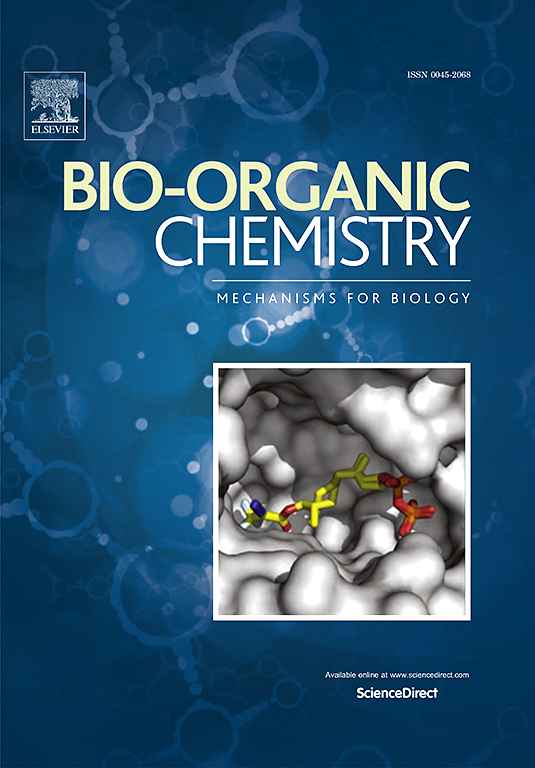Structure-activity relationship study of navarixin analogues as dual CXCR2 and CCR7 antagonists
IF 4.5
2区 医学
Q1 BIOCHEMISTRY & MOLECULAR BIOLOGY
引用次数: 0
Abstract
Despite the promise of the human chemokine receptor 7 (CCR7) as drug target for the treatment of cancer metastasis and autoimmune diseases, there are no potent and selective CCR7 antagonists known in literature. In this work, a 1,2,5-thiadiazole 1,1-dioxide with low μM activity as a CXCR2 and CCR7 antagonist was selected as starting point for a structure-activity relationship study. The replacement of the central thiadiazole dioxide motif with squaramide led to low nanomolar CCR7 antagonism. Additional systematic structural variations afforded various squaramide analogues that displayed potent CCR7 antagonism in a calcium mobilization assay with IC50 values in the low nM range. Unfortunately, the same compounds also displayed potent CXCR2 antagonistic activity and should therefore be considered as dual CCR7/CXCR2 antagonists.

纳伐利辛类似物作为CXCR2和CCR7双拮抗剂的构效关系研究
尽管人类趋化因子受体7 (CCR7)有望成为治疗癌症转移和自身免疫性疾病的药物靶点,但文献中还没有发现有效的、选择性的CCR7拮抗剂。本研究选择具有低μM活性的1,2,5-噻二唑1,1-二氧化二氮作为CXCR2和CCR7拮抗剂作为构效关系研究的起点。用甲酰胺取代中心噻二唑二基序导致低纳摩尔CCR7拮抗作用。另外的系统结构变化提供了各种squaramide类似物,在钙动员试验中显示出有效的CCR7拮抗剂,IC50值在低nM范围内。不幸的是,相同的化合物也显示出有效的CXCR2拮抗剂活性,因此应考虑作为CCR7/CXCR2双拮抗剂。
本文章由计算机程序翻译,如有差异,请以英文原文为准。
求助全文
约1分钟内获得全文
求助全文
来源期刊

Bioorganic Chemistry
生物-生化与分子生物学
CiteScore
9.70
自引率
3.90%
发文量
679
审稿时长
31 days
期刊介绍:
Bioorganic Chemistry publishes research that addresses biological questions at the molecular level, using organic chemistry and principles of physical organic chemistry. The scope of the journal covers a range of topics at the organic chemistry-biology interface, including: enzyme catalysis, biotransformation and enzyme inhibition; nucleic acids chemistry; medicinal chemistry; natural product chemistry, natural product synthesis and natural product biosynthesis; antimicrobial agents; lipid and peptide chemistry; biophysical chemistry; biological probes; bio-orthogonal chemistry and biomimetic chemistry.
For manuscripts dealing with synthetic bioactive compounds, the Journal requires that the molecular target of the compounds described must be known, and must be demonstrated experimentally in the manuscript. For studies involving natural products, if the molecular target is unknown, some data beyond simple cell-based toxicity studies to provide insight into the mechanism of action is required. Studies supported by molecular docking are welcome, but must be supported by experimental data. The Journal does not consider manuscripts that are purely theoretical or computational in nature.
The Journal publishes regular articles, short communications and reviews. Reviews are normally invited by Editors or Editorial Board members. Authors of unsolicited reviews should first contact an Editor or Editorial Board member to determine whether the proposed article is within the scope of the Journal.
 求助内容:
求助内容: 应助结果提醒方式:
应助结果提醒方式:


